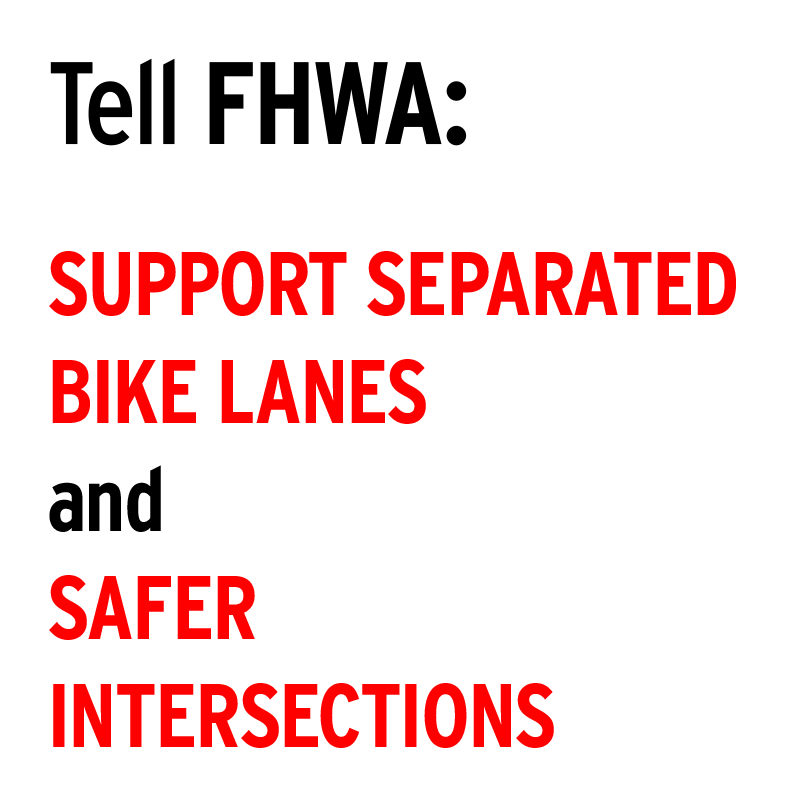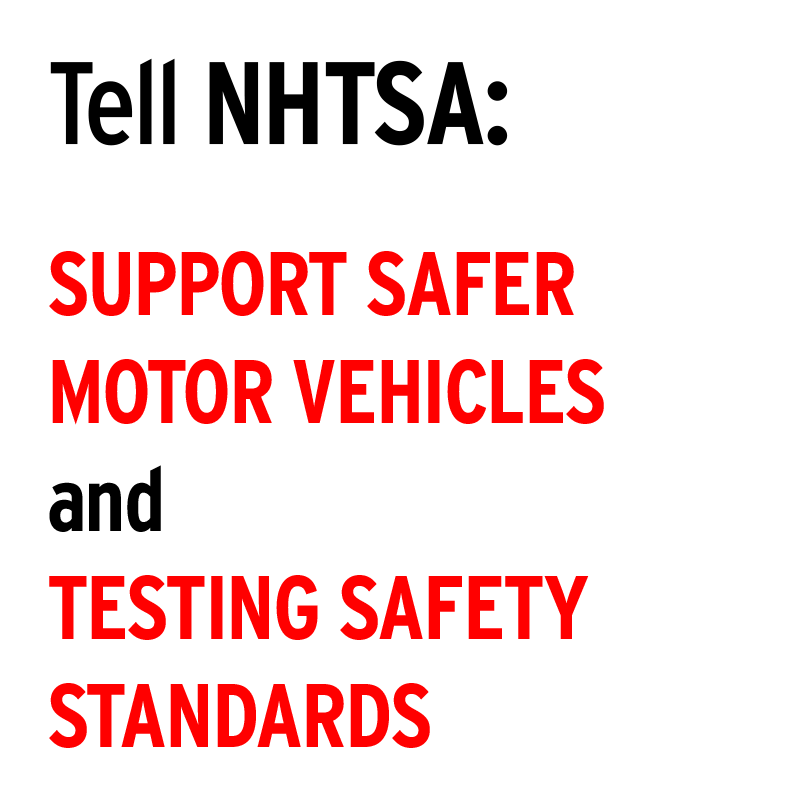DISCOVER YOUR LOCAL BICYCLING COMMUNITY
Find local advocacy groups, bike shops, instructors, clubs, classes and more!
Takeaways for States from the NTSB’s Bicycle Safety Report
The National Transportation Safety Board (NTSB) released its full report on bicyclist safety this week, the independent safety agency’s first report on bicyclist safety in 47 years. Most of the report focuses on what federal agencies can do to improve the safety of people who bike—the same kind of steps the League is consistently advocating for at the federal level. You can join us in this advocacy by contacting FHWA and NHTSA.
As part of our 2019 Bicycle Friendly State rankings, we produced an 18-page report on State Departments of Transportation in the Era of Safe Streets outlining steps states can take to improve the safety and enjoyment of bicyclists. Here are five key points that states should take away from the NTSB report and recommendations:
- 1. Improve data on bicycling
The NTSB found that “[c]urrent available data likely underestimate the level of bicycling activity in the United States” – this is the first finding listed in the report.
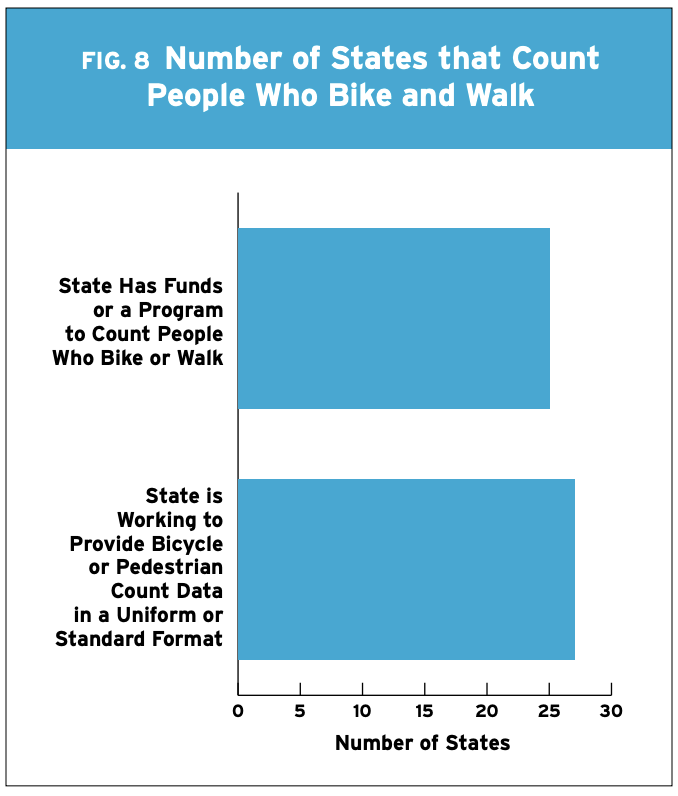
But, as detailed in our recent report, only about half of state Departments of Transportation have any bicycle count programs.
League recommendation:
State DOTs should develop programs to understand the movement of people who bike and walk. Those programs should strive to provide data that is consistent throughout the state and that can be compiled for national statistics through the FHWA’s Traffic Monitoring Guide. State DOTs should also work with public health agencies to understand physical activity using GPS or Bluetooth devices, as suggested in the NTSB report.
- 2. Create more separated bike lanes
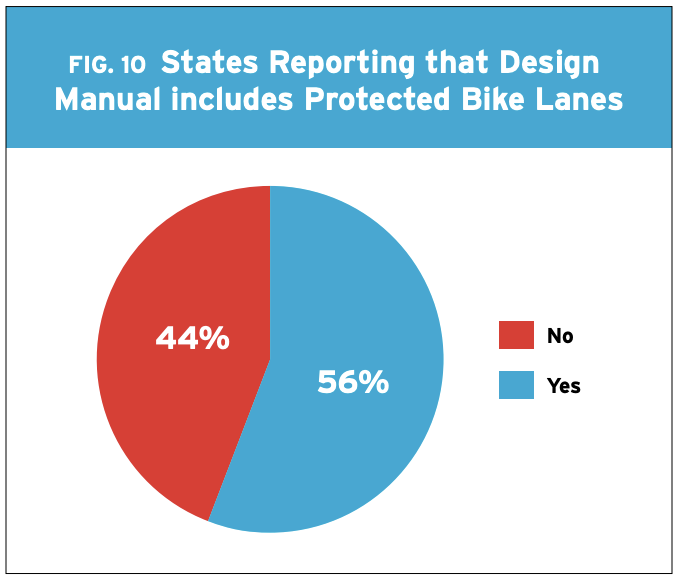 The NTSB found that “[s]eparated bike lanes could prevent bicycle crashes involving motor vehicles at midblock locations and, thereby, also reduce the number of fatalities and serious injuries associated with such crashes.”
The NTSB found that “[s]eparated bike lanes could prevent bicycle crashes involving motor vehicles at midblock locations and, thereby, also reduce the number of fatalities and serious injuries associated with such crashes.”
But, as detailed in our recent report, only 56% of state Departments of Transportation have design guidance on protected bike lanes.
League recommendation:
State DOTs should work with the American Association of State Highway and Transportation Officials (AASHTO) to ensure that strong guidance on protected bike lanes is included in the next edition of its Guide for the Development of Bicycle Facilities. In addition, state DOTs should actively identify corridors that meet criteria developed by FHWA and NACTO for the creation of protected bike lanes, train staff on designing and building protected bike lanes, and do site visits to areas with protected bike lanes to better understand their benefits.
- 3. Reduce Traffic speeds
The NTSB found that “[r]educing traffic speeds can improve bicycle safety by reducing the likelihood of fatal or serious injury in the event of a crash” and that “in Boston, the default speed limit was reduced from 30 mph to 25 mph in 2017, and the odds of vehicles exceeding 30 mph and 35 mph were reduced by 8.5% and 29.3%, respectively.”
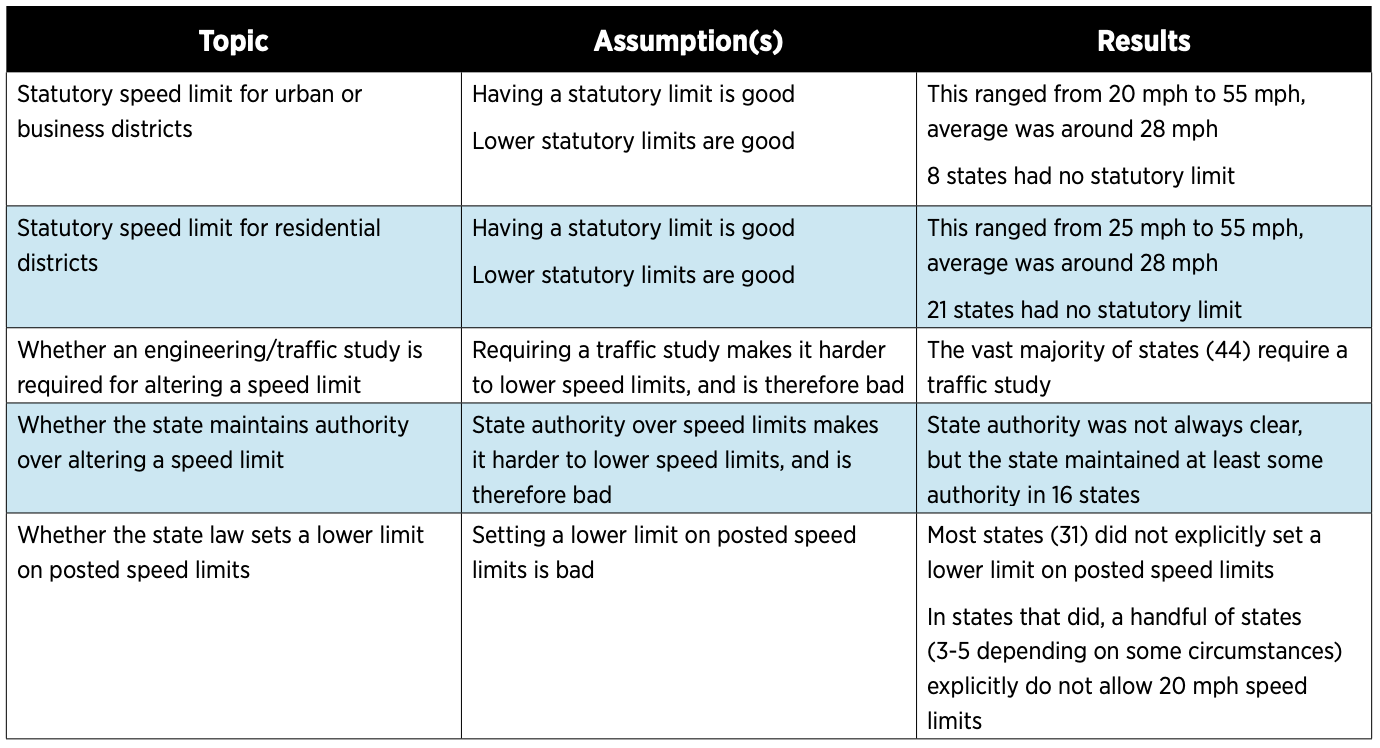
Our recent report detailed how state statutory speed limits can make it difficult to lower posted speeds, as done in Boston. Most states (88%) require a traffic study to lower a posted speed limit, 16 states retain authority over posted speed limits, and 3-5 states explicitly do not allow 20 mph or lower posted speed limits.
League recommendation:
State legislatures and state DOTs should review their speed limit setting statutes and processes. If necessary, statutes should be changed to allow places to post speeds of 20 mph or less if the community chooses to have a lower speed limit. Lower statutory and posted speed limits should be accompanied by road design changes that help drivers naturally travel at those speeds, through the use of road diets, chicanes, street trees, narrower travel lanes, bike lanes, and other features that are appropriate for lower posted speed limits.
- 4. The United States bikes less and is less safe than peer countries
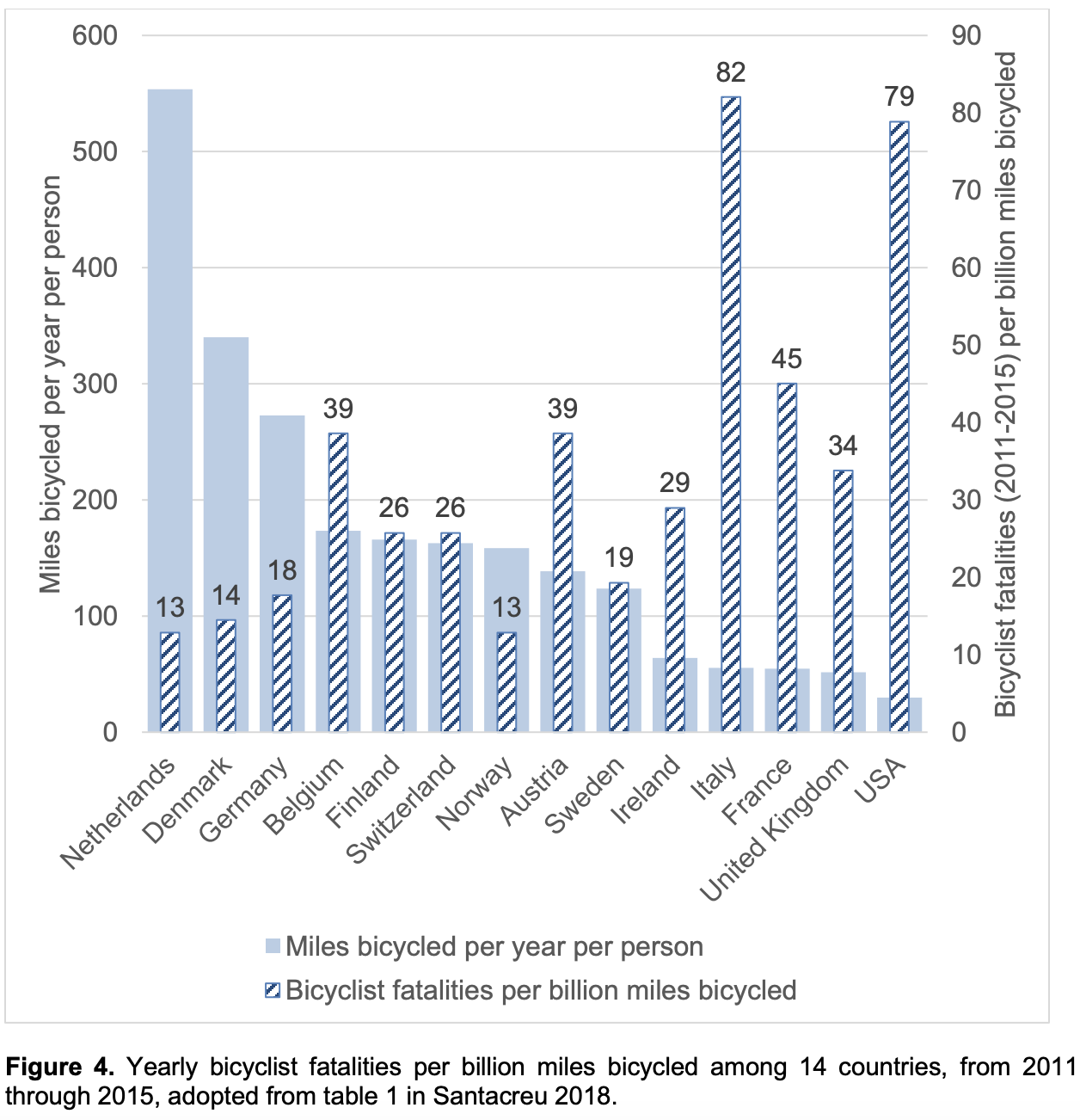 The NTSB found that the “FHWA has promoted bicycling for its health and environmental benefits since the 1990s in the United States,” but the level of bicycling in the United States was the lowest among the 14 countries [reviewed by the Economic Co-operation and Development (OECD)].” According to OECD data, people in Germany – another country famous for its auto industry – rode at least 9 times the distance per person than Americans and were four times less likely to be killed while biking.
The NTSB found that the “FHWA has promoted bicycling for its health and environmental benefits since the 1990s in the United States,” but the level of bicycling in the United States was the lowest among the 14 countries [reviewed by the Economic Co-operation and Development (OECD)].” According to OECD data, people in Germany – another country famous for its auto industry – rode at least 9 times the distance per person than Americans and were four times less likely to be killed while biking.
In our report, we found that most states do not take public health into account when planning or prioritizing transportation projects.
League recommendation:
State DOTs should work closely with state Departments of Public Health and pursue road designs that promote active transportation to everyday destinations and the safe systems approach found in successful Vision Zero activities. The potential to save lives and increase physical activity should be considered as part of project development and selection so that transportation investments promote public health.
- 5. Bicycle safety is the responsibility of all governments
The NTSB found that 54% of bicyclist fatalities occurred in communities with less than 50,000 people. When people talk about bicycling as an urban issue, they miss how many people die while biking in smaller communities and on state roads.
As detailed in our recent report, 45% of bicyclist deaths occur on state roads and bicyclist fatalities are over-represented on state roads in at least 43 and as many as 46 states (3 states did not identify where all bicyclist deaths occurred). In smaller communities, it is more likely that the state owns or controls the main street and arterials where bicyclists are killed. To address the safety of people who bike, governments at all levels—local, state, and federal—must work together to improve infrastructure, reduce speeds, and improve data.
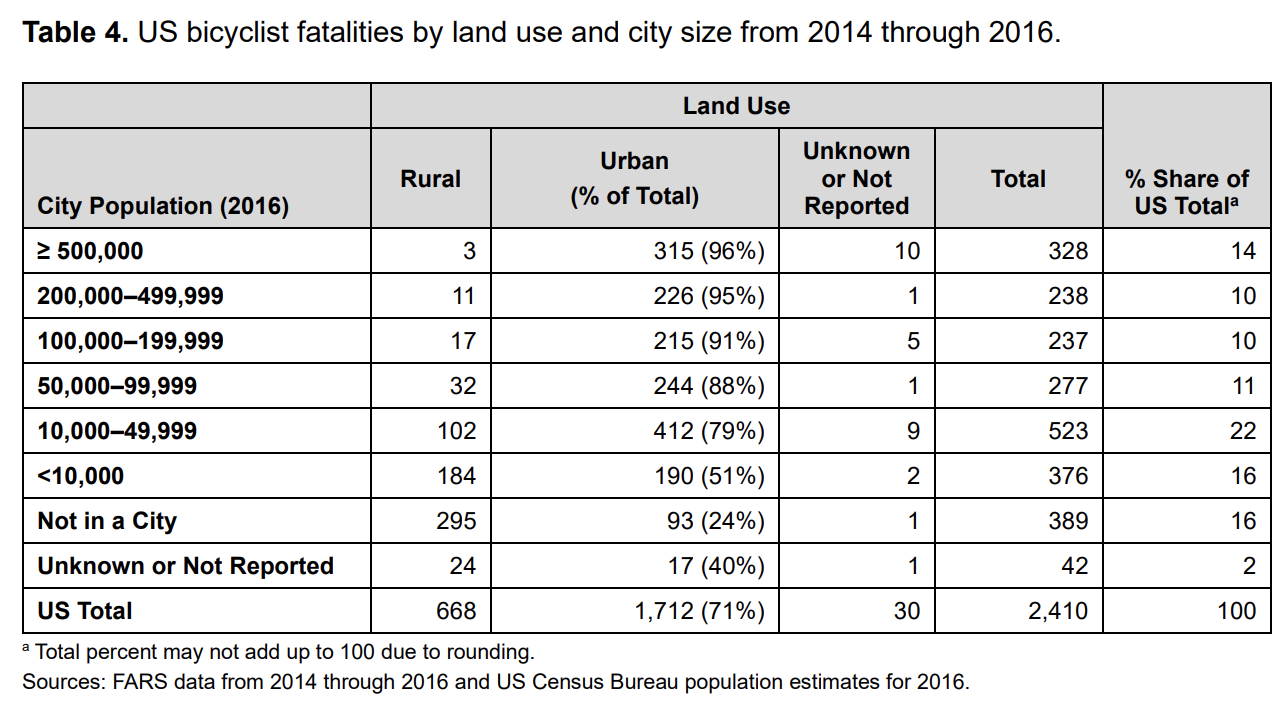
League recommendation:
State DOTs should proactively work with communities and the federal government to promote safer roadway designs for all users, including supporting increased state and federal funding for biking and walking. State legislatures should work with their state DOTs to ensure that the safety of all road users, particularly the most vulnerable, is a core value of each state DOT and that staff capacity, data systems, and policies on speed reflect a coordinated effort to reduce traffic deaths. State legislatures can also ensure that local governments have the ability to reduce speed limits, raise revenue for transportation investments, build better bicycle infrastructure without jumping through excessive hoops, and are not penalized for re-allocated roadway space to people who bike.
